Do you have any friends who, while waiting for the bus, the underground, waiting in line for banking, taking a nap at noon or after dinner, always pull out their wool and play with a couple of stitches whenever they find a gap?

Switch to crochet if the stick needles are inconvenient, or bring a ball of yarn if they can’t hold a bucket.
Whenever you see them, they are always knitting and knitting.
They enjoy knitting because the simple (not so simple for those who don’t know how) repetitive work creates a space for the brain. To knit not only a piece of fabric but also to find a place for the soul.
The knitting work gift full of love. It not only warms and delights the recipient and makes the giver proud.

Wouldn’t you like to try it?
Then start by getting to know the needles for wool. It takes about 4mins to read this article.
1.Material
Let’s start with the materials used for knitting needles。 They are generally available in metal, wood or plastic, each with its own advantages and disadvantages.
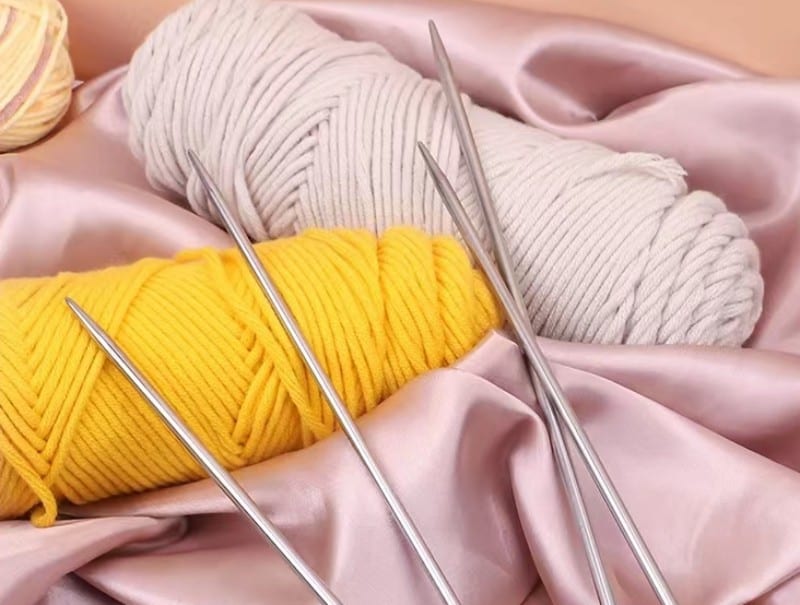
A.Metal Needles
Pros: Pillow point and smooth, suitable for very fine lace
Cons: the needles are hard and very loud when knitting, which makes your fingers sore after a long time. Metal needles are too slippery for mohair knitting and the loops in the Directorate can slip out at any time.

B.Bamboo or Wooden Needles
Pros: good elasticity of the needle body, looser and softer knitting, rounded needles that do not poke your hand
Cons: not smooth enough for coarse threads, fine needles are prone to breakage.
There are no advantages or disadvantages to metal or bamboo needles, so you can choose the right needle for the situation.

C.Plastic Needles
Pros: Lightweight, durable, cheap
Cons:few styles to choose from, generally used for stitching
2. Types of Needles
A. Double End Stick Needles
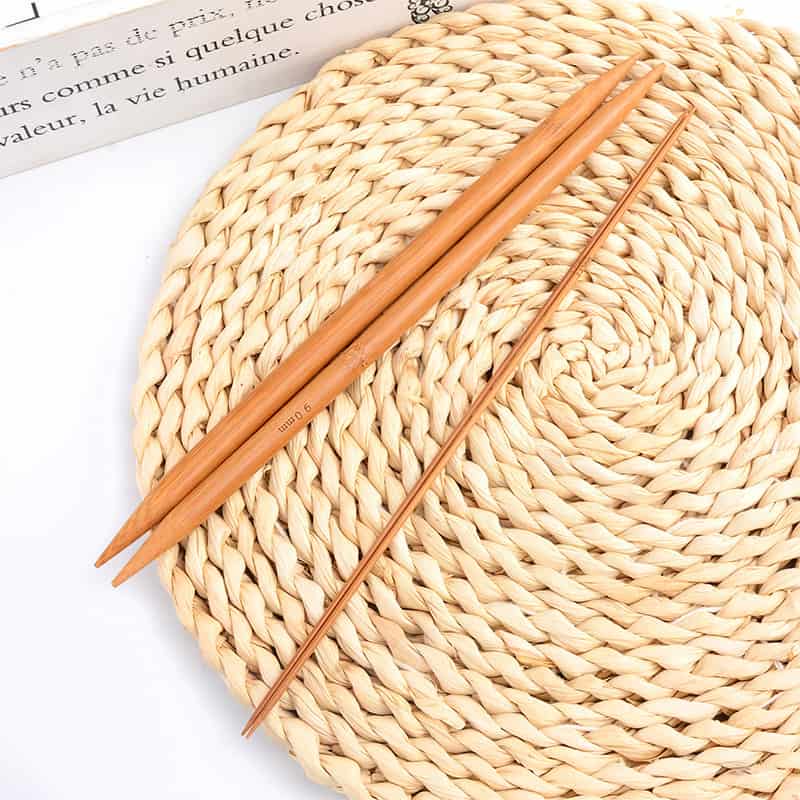
Before the invention of the circular needle, the earliest stick needles were the classic double-ended bar needles. Whether you are knitting socks, gloves or hats and jumpers, the double-end needle are best choice. As they allows you to adjust the circumference of the loop as the number of frames changes. It is difficult to achieve with circular needles. And you could use them as single-end needles to knit pieces with blocking. It is a multi-purpose needle.
For the green hand knitter who have no needles, a set of 4 or 5 double-end stick needles is the best option. Cheap and most versatile for all scenarios.
B. Single End Needles

The single-end stick needle also has its own special charm. Although it cannot loop circle item, the piece is most efficient and very ritualistic in its preparation.
C. Circle Needles
When I was first introduced to circular needles, I was amazed at how in the world there could be such a handy good thing! Yes, it can knitting round items , it can also knitting piece. It is more friendly to the person next to you when you are out with a circular needle. And it is easy to insert the wool when storing it.
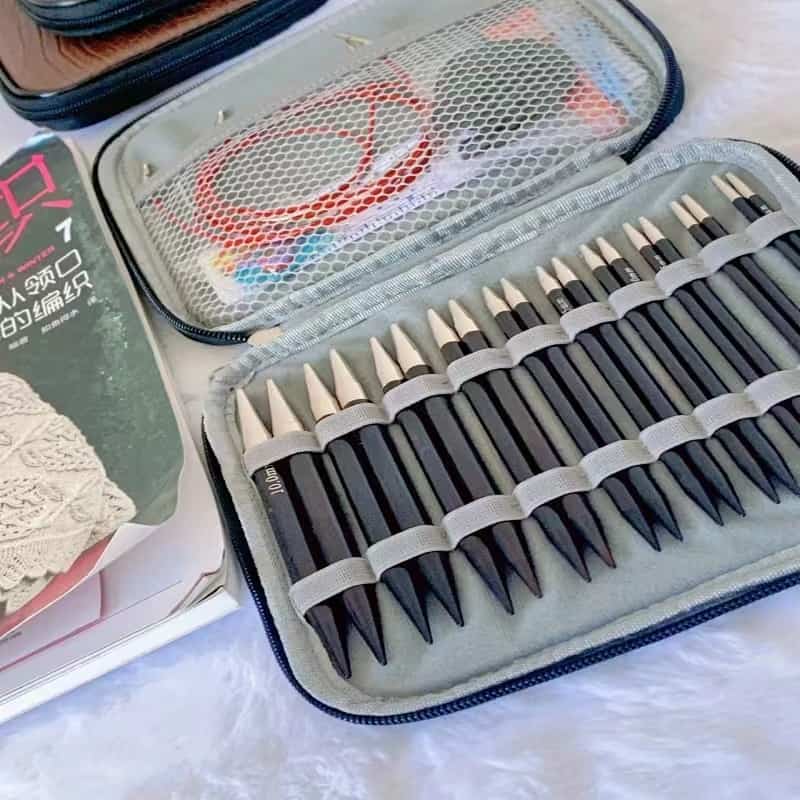
In recent years removable circular needles have mostly been sold in sets. It is not too late to get started if you solved all the following problems.
a. The habit of knitting with long straight needles held under the armpit
b. The detachable joints tend to be unscrewed and cause snags.
c. The set looks like a lot of needles, in fact there are only 5 strings. It equates to a maximum of 5 pieces of knitting for a colleague in the set, leaving more needles free.
d. The fact that there are seemingly different lengths of needle strings does not match the shorter strings and longer needles
e. More than harf needles size are not used, so it is not economical to buy set.
f. Different brands are not compatible.
D.Crochet Hooks
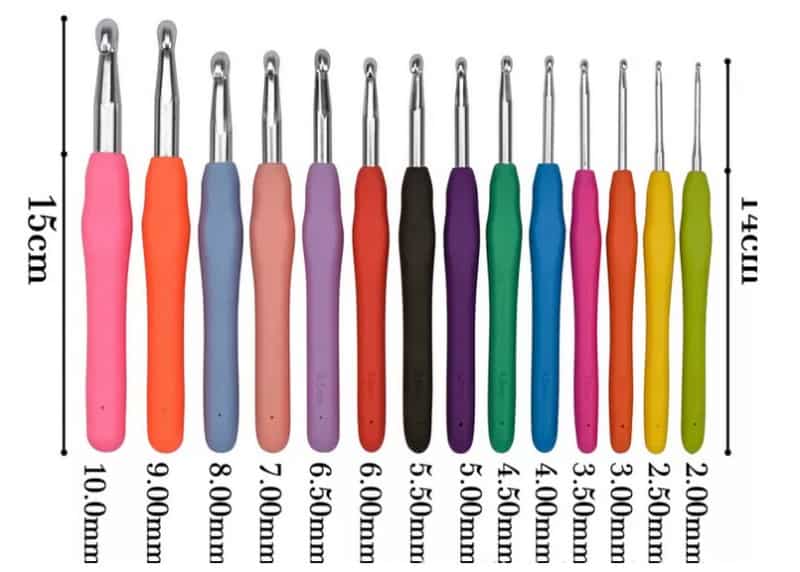
Crochet is much easier to learn and better to create many beautiful openwork patterns. Cute little pendants, stylish bags, cuffs, collars, hems and more can be crocheted in a way that is not possible with stick needles.

E. Latch Needles Hook

This crochet hook is usually used for stitching and the thread does not come off easily.
F. Tufting Gun

This handcrafted method has become popular in recent years. It originated from Russian hand-made carpets. It is actually a type of embroidery using wool thread onto fabric or netting, with the freedom to design patterns and colours.
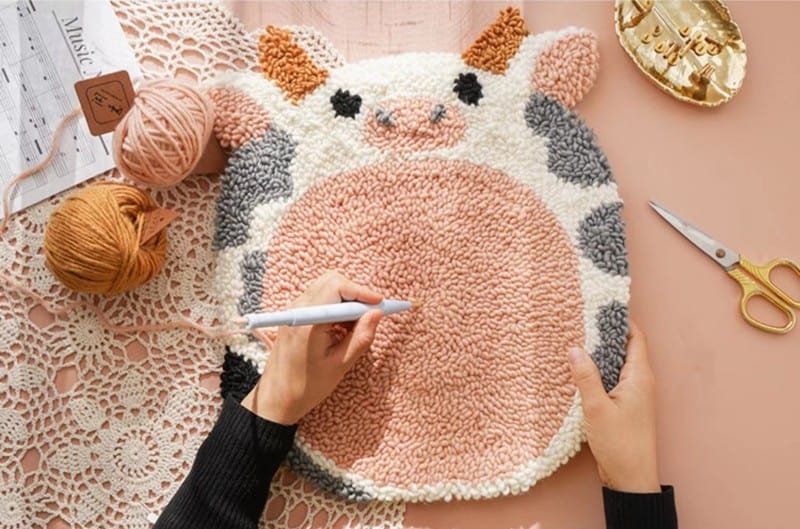
Of course there is another type of punch needles that can make miniature dolls or toys for pets using felt fibres, hair etc.

G. Hand Sewing Needles

Hand Sewing Needle
This needle is similar to a regular garment hand sewing needle. Well it has a larger eyelet. It is very convenient for repairing stitches or embroidering on pieces of material.
3.How To Select Suit Size of Stick Needles
A.Commonly used UK stick needle gauge (the larger the gauge, the finer the diameter, in mm)
| Code | 13 | 12 | 11 | 10 | 9 | 8 | 7 | 6 | 4 |
| Diameter | 2.25 | 2.75 | 3 | 3.25 | 3.75 | 4 | 4.5 | 5 | 6 |
B.Commonly used USA stick needle gauge (the larger the gauge, the thicker the diameter, in mm)
| Code | 0 | 1 | 1.5 | 2 | 2.5 | 3 | 4 | 5 | 6 |
| Diameter | 2 | 2.25 | 2.5 | 2.75 | 3 | 3.25 | 3.5 | 3.75 | 4 |
| Code | 7 | 8 | 9 | 10 | 10.5 | 11 | 13 | 15 | |
| Diameter | 4.5 | 5 | 5.5 | 6 | 6.5 | 8 | 9 | 10 |
C.Commonly used Japanese stick needle gauge (the larger the gauge, the thicker the diameter, the needles code increases by 0.3, in mm)
| Code | 0 | 1 | 2 | 3 | 4 | 5 | 6 | 7 | 8 |
| Diameter | 2.1 | 2.4 | 2.7 | 3 | 3.3 | 3.6 | 3.9 | 4.2 | 4.5 |
| Code | 9 | 10 | 11 | 12 | 13 | 14 | 15 | ||
| Diameter | 4.8 | 5.1 | 5.4 | 5.7 | 6 | 6.3 | 6.6 |
D.The needle code in China is directly named according to the diameter, in mm.

You could choose the right needle according to the fabric in the table below and the thickness of the thread.
| Fabric | Needles’ Diameter | Corresponding Wool |
| Sweater (for baby) | 2-3mm | Super fine cashmere thread, lace thread |
| Scarves, hats, clothes | 3-4mm | Cashmere, marten, chenille |
| Doll | 4-6mm | Medium coarse milk cotton, coral wool |
| Thick Sweater | 6-8mm | Milk Fiber |
| Cofa Cover, Cushion | 7-10mm | Ice wool, Extra coarse wool |
That’s all for wool hand knitting needles . What else do you want to add? Please drop me a line.

One Response
This blog is an excellent source for information on related subjects.